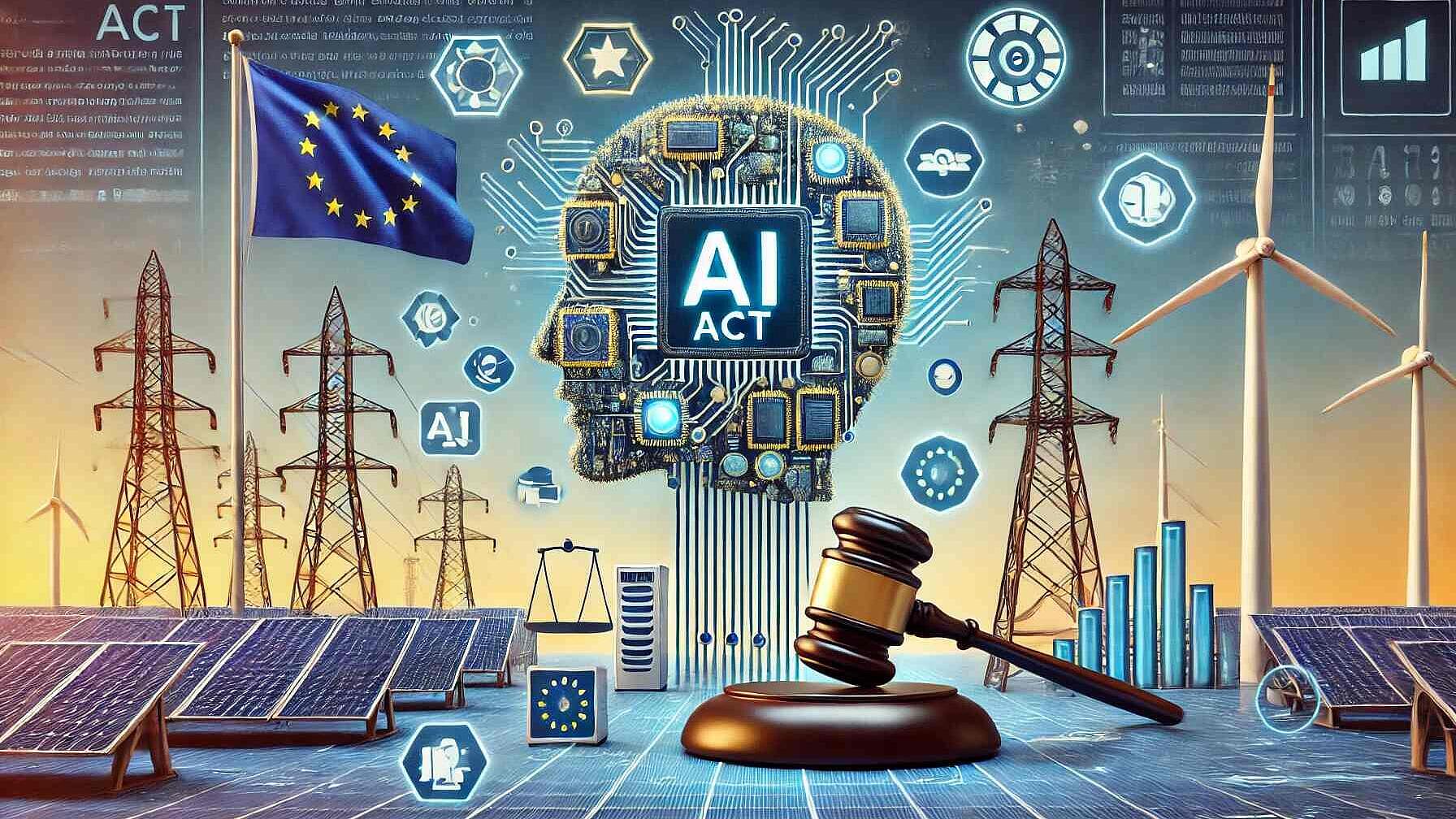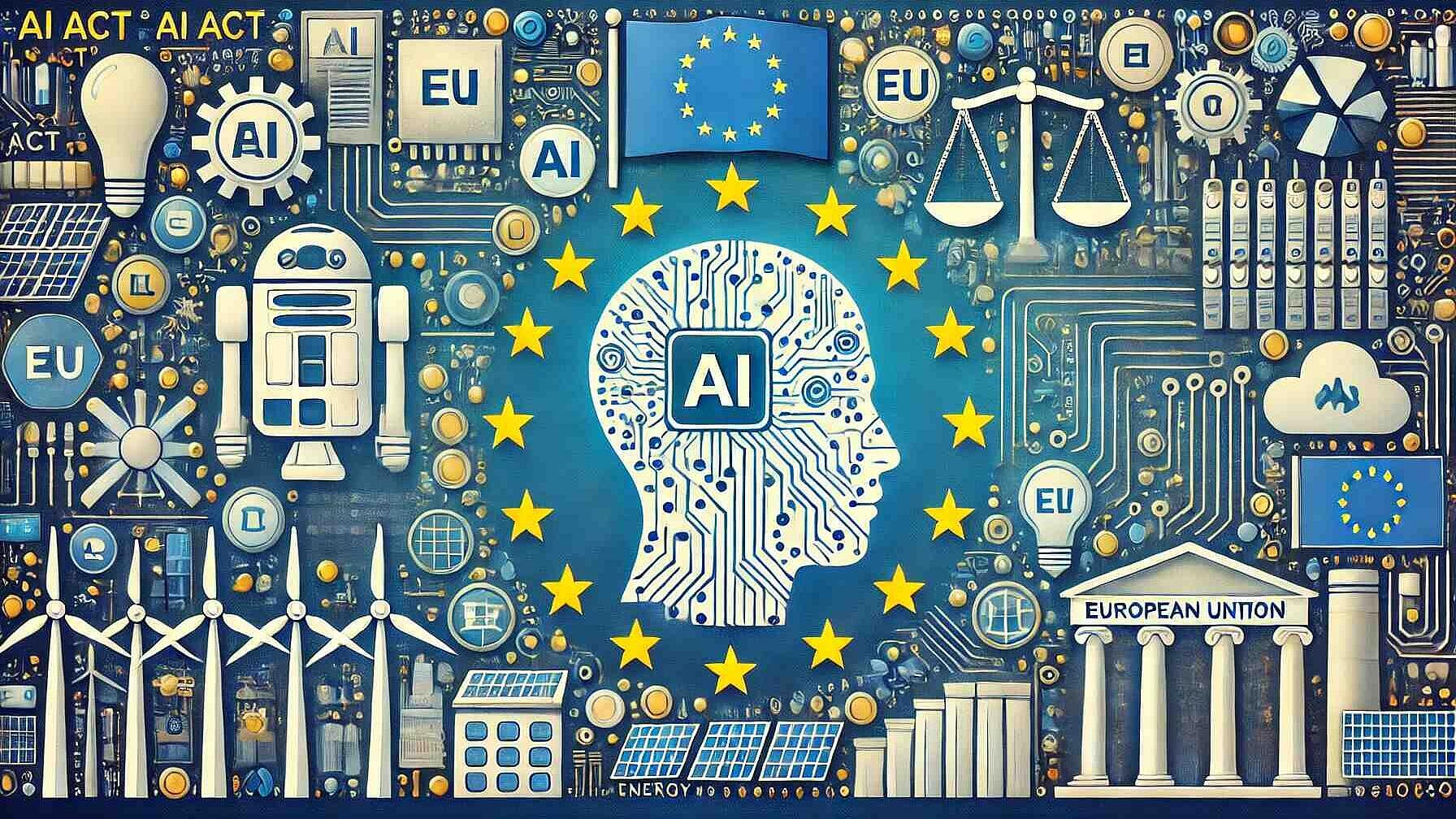 Policy & Regulation
Policy & RegulationThe EU Coordinated Plan on AI: Expectations for the Energy Transition
Summary
The European Commission published its latest set of actions and regulations for managing the development of Artificial Intelligence in the EU. The Coordinated Plan on Artificial Intelligence is a joint commitment issued by the the European Commission and Member States. A stronger stance with clear guidelines and/or regulation is urgently needed, if we aim to achieve both EU climate goals and EU market lead in the field of AI. And let us thrive for a sectoral dialogue and exploration of KPIs on green AI that will set clear-cut framework for the next AI Coordinated plan and bring us closer to a well-balanced AI and environmental EU policy. The cooling, running and maintenance of data centers around the world could account for up to 10% of global energy consumption by 2025, this directly counteracts the EU effort towards a cut of 55% GHG emissions by 2030. The EU is still aiming for a net-zero AI and eco-friendly AI and digital-strategy.
Open full article
The EU Coordinated Plan on AI: Expectations for the Energy Transition
The European Commission published on 21 April 2021 its newest set of actions and regulations for managing the development of Artificial Intelligence in the European Union. This vastly popular technology is gaining ground quickly throughout member states, bringing hope for solutions to reach EU energy and climate targets, as well as risks to evolve in counter-effective and even dangerous directions. This new coordinated plan commits to regulate the evolution of AI technologies and to steer them towards supporting our common goals.
But what is in store for those of us working on the clean energy transition?
A coordinated action plan
The Coordinated Plan on Artificial Intelligence is a joint commitment issued by the the European Commission and Member States. A former plan was issued in 2018 establishing a strong ambition to focus resources on strengthening AI strategies across Europe. However, while this original action plan centralised around maximising investments to AI and forecasting a framework within which these actions can operate, the current update has widened and steadied its perspective. The spotlight now revolves around a regulated framework that still does aim to enable AI, but examines closely the risks of AI applications from the perspective of security, ethics, public use, innovation and - most relevant to this post - the climate and environment.
"Accelerate, act and align AI policy priorities and investments"
- accelerate investments in AI technologies to drive resilient economic and social recovery facilitated by the uptake of new digital solutions;
- act on AI strategies and programmes by implementing them fully and in a timely manner to ensure that the EU reaps the full benefits of first-mover adopter advantages;
- and align AI policy to remove fragmentation and address global challenges.
Bringing AI into play for climate and environment
Chapter 11 of the Coordinated Plan directs European AI's path towards supporting the EU's climate goals. Technologies that have a potential in facilitating an affordable, acceptable and circular clean transition, such as those aiding more efficient and less energy-intensive production; improving the energy management choices of companies as well as citizens; or enabling decarbonisation of buildings are now part of the category that the plan calls "climate-and environmentally friendly AI solutions". Among these, the European Commission and Member States pledge to strengthen research and implementation particularly in the following areas:
- sustainable production
- greener AI / lower energy consumption
- broadly available environmental application
- climate resilience
- common data space for smart & climate-neutral communities
The flip side & outlook
So what can we expect under the roll-out of this updated plan? Certainly a continuing support to research, implementation and market uptake of AI solutions, as the EU is still aiming for a global leadership position in the field. Funding programmes, like Horizon Europe or the Digital Europe Programme prove this by having AI among their top priorities.
On the flip side, many aspects of AI now addressed in the Coordinated Plan are still in very early phases. For example, the plan now recognises the impact of the large-scale expansion of AI on energy consumption, but does not go into specific strategic steps in order to stall or transform its negative impacts:
While AI has a strong potential to facilitate the achievement of EU climate and environment objectives, the technology itself has a significant environmental footprint, especially in terms of energy consumption. Therefore, further assessment and actions are necessary to ensure that the net environmental impact of AI is positive.
As the cooling, running and maintenance of data centers around the world could account for up to 10% of global energy consumption by 2025, this directly counteracts the EU effort towards a cut of 55% GHG emissions by 2030. However, targets of the current action plan do not yet address the roadmap to a net-zero AI or any cornerstones that stakeholders could follow.
A stronger stance with clear guidelines and/or regulation is urgently needed, if we aim to achieve both EU climate goals and EU market lead in the field of AI.
In the meanwhile, let us thrive for a sectoral dialogue and exploration of KPIs on green AI (current actions forecast in the Coordinated Plan) that will set clear-cut framework for the next AI Coordinated Plan and bring us closer to a well-balanced AI and environmental EU policy.
Relevant links & references:
- digital-strategy.ec.europa.eu/en/library/coordinated-plan-artificial-intelligence
- digital-strategy.ec.europa.eu/en/policies/european-approach-artificial-intelligence
- www.researchgate.net/publication/320225452_Total_Consumer_Power_Consumption_Forecast
- ec.europa.eu/newsroom/dae/document.cfm
- op.europa.eu/en/publication-detail/-/publication/2f4dea95-288c-11eb-9d7e-01aa75ed71a1/
- horizon-magazine.eu/article/ai-can-help-us-fight-climate-change-it-has-energy-problem-too.html
- www.forbes.com/sites/forbestechcouncil/2020/08/17/why-we-should-care-about-the-environmental-impact-of-ai/




